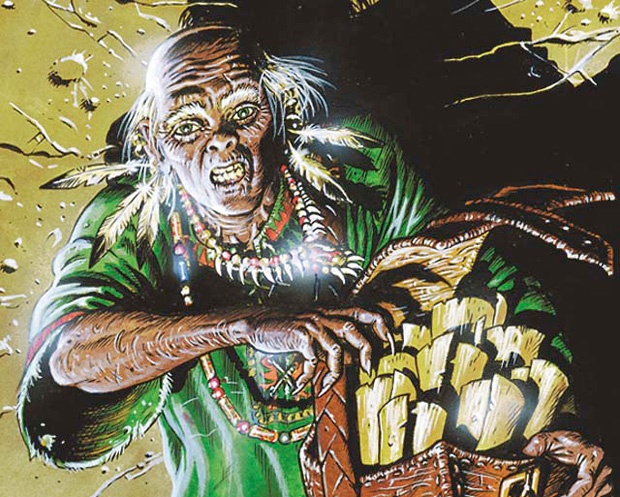By: Camden Clark
Emotions are an integral part of investing. They determine how we feel before, during, and after an investment that we make.
When it comes to MTG finance, there are very few articles deciphering the emotions within the context of Magic: the Gathering.
This is especially dire considering the effect emotions have on the game outside of speculation. As card game players, we are all subject to runs of good and bad luck. Respectively, we have ups and downs emotionally. Some people react to luck with superstition, some with rage, some with apathy. Regardless, we play this game that features the interaction between luck and strategy which is balanced quite well.
With investment in Magic cards the same emotions are at play. There are the ups and downs, the fear and bravery.
Except, this time, there is money on the line. It is more important here to be in tune with how you are feeling and how that influences the decisions you make.
Thus, it is valuable to take some time out to explore the reasons we make the decisions we make.
Fear
It is January of 2014. You have a few playsets of Remand but are concerned about a possible reprint due to its conspicuous absence from Modern Masters. Naturally, you fear a possible reprint of Remand which would depreciate the cards price.
How about another hypothetical? You are on ChannelFireball.com at exactly 9PM PST. Travis Woo’s article is up. It has a new spicy brew that could pick up a lot of casual players. The brew features a card that is virtually bulk at the moment. But what if this deck doesn’t get any traction? Then you are stuck with these one-hundred of these bulk cards.
These hypotheticals are not far from real cases and fears people have. Fear can cause hesitation and lack of confidence. Conversely, fear can cause one to sell out too quickly before making any profit or even “cutting your losses.”
As much as fear is dangerous it is an important emotion to utilize as it provides a filter for all the potentially bad decisions you could make. I specifically use the terminology “in tune” because it quite accurately describes how you need to relate to fear. You need to take into account how fear may drive you away from these bad decisions but also how it could limit your decisionmaking.
One way to channel your fear is to do more research. To take one of the hypotheticals from above, if Travis Woo’s builds always cause a price jump on the cards that he builds around, let that guide your decisions as opposed to blind fear which can make you hesitate. The best antidote will be your own research and experience.
Ultimately, you have to be willing to take the dive or let a bad spec run its course. If you are taking major hits by selling out, choose not to sell out.
It all goes back to channeling your knowledge and experience as a player to determine from case to case where you should suspend your reservations or when it is best to move in.
Euphoria
It is easy to get wrapped up in your successes and feel unstoppable. If you are coming off many successes in speculation it can get difficult to say no to yourself. Investment may become an impulsive activity.
If you just made a whole bunch of money off of Restoration Angel, then Birthing Pod, you might be more likely to invest in the next Nivmagus Elemental. Controlling yourself after coming off a chain of wins is quite difficult and takes an enormous amount of self-discipline.
The best way to channel joy is to let it motivate you. Getting excited and pumped about wins should motivate you to examine what it was that made those decisions good decisions and rolling with those methods. It should influence you to do more work and try to replicate the wins you have just came off of.
However, do not let joy blind you. This is the main pitfall of this emotion. You have to stay rigid and do what works for you or you will get burned hard.
The best companion to euphoria is a healthy dose of fear. There are two types of stress, eustress and distress. Eustress is the positive type that motivates you to do things. Distress is negative and can cause you to have panic attacks. Channel eustress from fear to counteract the negative effects of getting overconfident.
Anger
How many times have you watched a twitch.tv streamer yell into their microphone and shut their stream off in frustration at the seventh land that has come off of their deck?
I have personally seen it far too many times.
Now how many times have you watched a popular twitch.tv streamer do the same thing?
I’m willing to venture a lot less.
Randomness is an inherent part of the game we play. We have to take risks and sometimes get punished for them.
Just like in Magic’s gameplay, investment is never a “sure thing.” There is always inherent risk in any investment. Many investments are a promo away from tanking.
It is very easy to get just as wrapped up in failure as in success.
The best thing to do is get some perspective. Take a break from the grind. It will make you a healthier and happier person. After you have taken a break, you will be able to approach everything with fresh eyes and not make rash, emotional decisions. Perhaps you even focus on playing the game you spend time investing in as opposed to only being focused on the bottom line.
It might be a good idea to reconsider why exactly you are into Magic finance when you get angry. The reason most of us get into MTG finance is because we like the game. You should get excited for playing the game and watching the players you like play it. That will reinvigorate you and refocus your efforts as opposed to wallowing in anger.
Complacency
When you are making money it is easy to get complacent. You won’t pursue new avenues to make money or might even ignore great opportunities to make serious cash.
It is hard to determine when you are getting complacent or if it even matters to you. If you are making money it can be difficult to realize the potential of thinking outside of the box and opening up new opportunities for profit.
The main way to get out of a complacent mindset is to read what others have to say about Magic finance. Try something new. Do something that looks interesting or groundbreaking. Make sure you are recording your efforts efficiently and with a focus on learning. The best thing about evading complacency is the opportunity to learn something.
This extends to what you’ve already been doing. If you fail to gather valuable data and stretch the limits of the methods you are already doing you have gotten complacent. Learn more and you’ll achieve more.
Many people will think that these ideas and concepts are rudimentary. However, there is value in exploring them.
The game of Magic itself is a card game. It is a game of strategy. However, it is also a game of chance. Emotions run high in a game of chance. The same people who are attracted to games of chance are attracted to using that game as an investment platform. We are all victim to our emotions at one point or another.
Just like playing Magic, we have to use strategy to mitigate chance in the finance aspects of the game. You should be reorienting your strategy constantly in order to maximize your profit.
The key is being cognizant of the fact that we are humans. We have emotions. We act and don’t act based on those whims. Once you have awakened this self-awareness you can be more effective and objective in your analysis.
The end all be all is that you have to focus on analyzing what it is that makes you successful or not successful. You cannot be an emotionless robot. You can use your emotions to make better decisions or try something new. Even anger can be channeled into something positive.
I have become enamored with a sort of meta-analysis of the investment actions we take. It is necessary to question the preconceived notions that we have in order to get better at what it is we do.
What experiences have you had with emotions running high or low in your investments? Leave it in the comments. Thanks.







